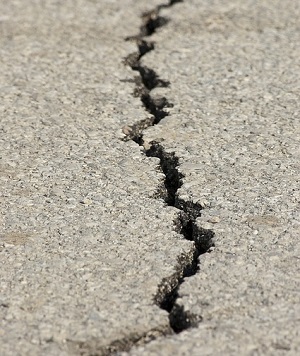Despite significant improvements in the structural resilience of buildings since the Great Kanto earthquake, which took place 100 years ago in Japan, analysis by reinsurance giant Swiss Re warns that a single quake in the country could result in insured losses of between $130 billion and $150 billion.
 Seismic risk remains extremely high in Japan, and although structural improvements and disaster mitigation efforts have been put in place, parts of the country, namely Tokyo, have a very high concentration of population and wealth.
Seismic risk remains extremely high in Japan, and although structural improvements and disaster mitigation efforts have been put in place, parts of the country, namely Tokyo, have a very high concentration of population and wealth.
Tokyo is the most densely populated city in the world, with high asset values and a mature insurance market, which is why Swiss Re estimates that a quake in this region would result in the highest ever loss globally from one event.
The reinsurer highlights that, in 2022, the Tokyo Metropolitan Government estimated that a Mw 7.3 quake below the city, which has an expected 70% probability in the next three decades, could claim 6,000 lives and destroy or severely damage more than 190,000 properties.
Swiss Re says that the estimated economic loss from direct and indirect damages would be JPY 95.3 trillion, or $940 billion in today’s values. This is 3.5 times the typical total economic loss from all natural disasters globally in a year.
The reinsurer has estimated that the associated insured losses from residential and non-residential claims would amount to about JPY 13.3-15.2 trillion, or $130-150 billion today, which is huge.
“In Japan, the underwriting risk on earthquakes is shared between the government and private sectors. Despite Japanese non-life insurance companies’ capital resilience under stringent solvency regulation, earthquake risk in Tokyo remains a major threat that calls for continuous strengthening of worst-case scenario planning and modelling of all loss drivers,” says Swiss Re.
The Great Kanto Earthquake is still Japan’s worst natural disaster, with more than 100,000 lives lost and economic losses of close to a third of its GDP in 1923.
Japan is one of the world’s most earthquake-prone countries. Since 1950, there have been four large quakes of Mw 8 or more, and 148 mid-sized earthquakes of Mw 5-7.
As noted by Swiss Re, the Tokyo Disaster Management Council estimates up to a 6% probability of a repeat Mw 7.9 earthquake striking the city within the next 30 years. Given its history with quakes, Japan has implemented strict building codes which are continuously updated to increase the seismic resistance of buildings.
Swiss Re explains that these measures helped in 2011 when the Mw 9 Tohoku earthquake and tsunami saw relatively low loss of life despite being the strongest-force quake ever to strike Japan, and the fourth-strongest worldwide.
Even so, and despite it striking a relatively rural region, economic losses were above $280 billion (inflation-adjusted), the highest from any natural catastrophe globally since 1970.
Swiss Re added that the event also exposed vulnerabilities, since most deaths and about a third of the economic damage were caused by the follow-on tsunami, which breached preventative seawalls, rather than the quake itself.
Although the height of seawalls has increased, Japan still has a sizeable percentage of buildings constructed before 1981, notes Swiss Re.
In fact, Swiss Re estimates that if a major earthquake were to strike the Kanto region again today, the human toll and economic fallout could be vast. It is home to about 39 million people, more than four times that of 1920, and produces 39.3% of Japan’s GDP as of 2019.
Swiss Re reports that “despite the strict building codes and other measures, earthquakes in Japan could still trigger staggering losses. For example, the economic losses from a Mw 7.3 quake beneath the Tokyo Metropolitan area could be nearly $1 trillion in today’s prices, and we estimate that the associated insured losses could be almost twice the annual average loss from all natural disasters globally for the last 10 years.”


